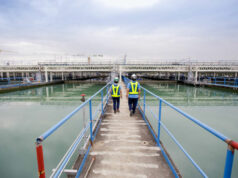TECHNOLOGY will aid the absorption of more elderly workers into the labor force, a key consideration for regional economies where populations are rapidly aging the Asian Development Bank (ADB) said.
ADB Chief Economist Yasuyuki Sawada said in a statement Wednesday that while the aging populations aren’t reversible, governments can create a “silver dividend” by encouraging technology that complements the skills of older workers.
“Today’s elderly are better-educated and healthier than in the past. The right policies on technology could extend working lives, generating a substantial contribution to the overall economy,” he said.
In ADB’s Asian Economic Integration Report 2019/2020 (AEIR): Demographic Change, Productivity, and the Role of Technology, the average healthy life span has increased in Asia and Pacific between 1990 to 2017 by seven years, from 57.2 years to 63.8. The average years spent in education has also increased for 55 to 64 year olds in the same period, from 4.8 years to 7.8 years.
ADB said that technology policy needs to boost productivity among older workers and has classified countries accordingly by their population age profile. Type-1 countries are defined as fast-aging and above-median education, Type-2 are fast aging and below-median education, Type-3 slow-aging and below-median education, and Type-4 slow-aging and above-median education.
ADB said Type-1 and Type-2 countries “will need to prioritize technology adoption that fosters professional and foundational skills and improves job matching for workers, given the general difficulties faced by older workers in finding jobs.”
Type-3 and Type-4 countries on the other hand “will need to prioritize technologies and policies that take advantage of a young and still-expanding workforce while addressing challenges that impact both older and younger work forces to meet the future demand for skilled labor.”
While most see the aging workforce as an economic impediment to growth due to diminished output, this “can induce rapid adoption of labor-saving technologies.”
In the report, ADB also said that physical ability decreases with age but technology can help the elderly maintain their work performance. Such innovations include physical augmentation technologies that help in mobility.
Other policies that are elderly-friendly include telecommuting or working anywhere outside the workplace. ADB said that this cuts travel time for the aging worker and increases their productivity. — Gillian M. Cortez



